The primary causes of anemia are varied and complex, ranging from biological drivers such as hemoglobin disorders and infectious diseases to more indirect (or “distal”) causes such as health policies and ecological factors. The conceptual framework in Figure 7 presents these drivers and illustrates the diversity of causes that can influence levels of anemia prevalence.
Figure 7. Conceptual framework showing distal, intermediate, and proximal determinants of anemia among women of reproductive age

Among these numerous factors, a subset could yield steep reductions in anemia prevalence, if addressed successfully.
Based on a quantitative analysis leveraging data from Uganda’s 2006 and 2016 Demographic and Health Surveys, we identified six broad factors that accounted for 89% of the observed change in anemia prevalence among non-pregnant women over this interval. These six factors are as follows:
- Malaria control—including prevention and treatment interventions
- Family planning—including more widespread adoption of modern contraceptive methods to reduce unintended or high-risk pregnancies
- Sociodemographic development—notably, poverty reduction, urbanization, and expanded access to clean water and better sanitation
- Women’s empowerment—including improvements in education, literacy, employment, and decision-making authority
- Broadened use of health services and antenatal care (ANC)—including an increased proportion of pregnant women who attend at least four ANC sessions
- Improvements in maternal nutritional status—including higher body mass index and better dietary diversity
Several of these factors are expanded on below.
Figure 8. Oaxaca-Blinder decomposition, increase in hemoglobin (g/dL) among non-pregnant women in Uganda, 2006–2016
Malaria control
Uganda demonstrated a strong commitment to malaria reduction to improve maternal and women’s health, including the reduction of anemia risk. Malaria is endemic to Uganda—with children under five and pregnant women most at risk—and is a major cause of mortality and morbidity. Additionally, malaria has been shown to increase the risk of anemia during pregnancy., Malaria parasites infect and rupture red blood cells, provoking the immune system to destroy additional red blood cells that escape the earlier infection. Moreover, infection leads to lower production of red blood cells, causing the onset of anemia. Thus, the treatment and prevention of malaria are critical drivers for reducing the risk of anemia among women of reproductive age (WRA).
Uganda’s strong progress in malaria reduction was observed across several indicators during the study period. The malaria incidence rate (measured in the number of cases per 1,000 individuals at risk) decreased from 421 in 2006 to 283 in 2016. Of particular note is that malaria prevalence among women ages 15 to 49 was 30% in 2006, and by 2016, it decreased to 19%—a 37% reduction.
Figure 9. Progress in reducing malaria among women of reproductive age in Uganda, 2006–2016

Uganda’s success was enabled by political commitment to malaria reduction and prevention, best illustrated by the Malaria Control Strategy, which catalyzed programs and policies such as the National Malaria Control Policy and the Uganda Malaria Reduction Strategic Plan. These programs focused on ensuring broad community-level access, coverage, and utilization of critical malaria prevention and treatment interventions. An impact assessment by the Uganda Ministry of Health in 2014 found that these programs played a pivotal role in achieving national health targets, including a reduction in the all-cause under-five mortality rate and the proportion of children ages 6 to 59 months with moderate or severe anemia. Specifically, the all-cause under-five mortality rate per 1,000 live births declined from 137 in 2006 to 90 in 2011, while malaria-related outpatient department visits decreased in both children under five and adults. These outcomes underscore the substantial impact of the Uganda Malaria Reduction Strategic Plan in improving public health in the country, with benefits extending to WRA as well.
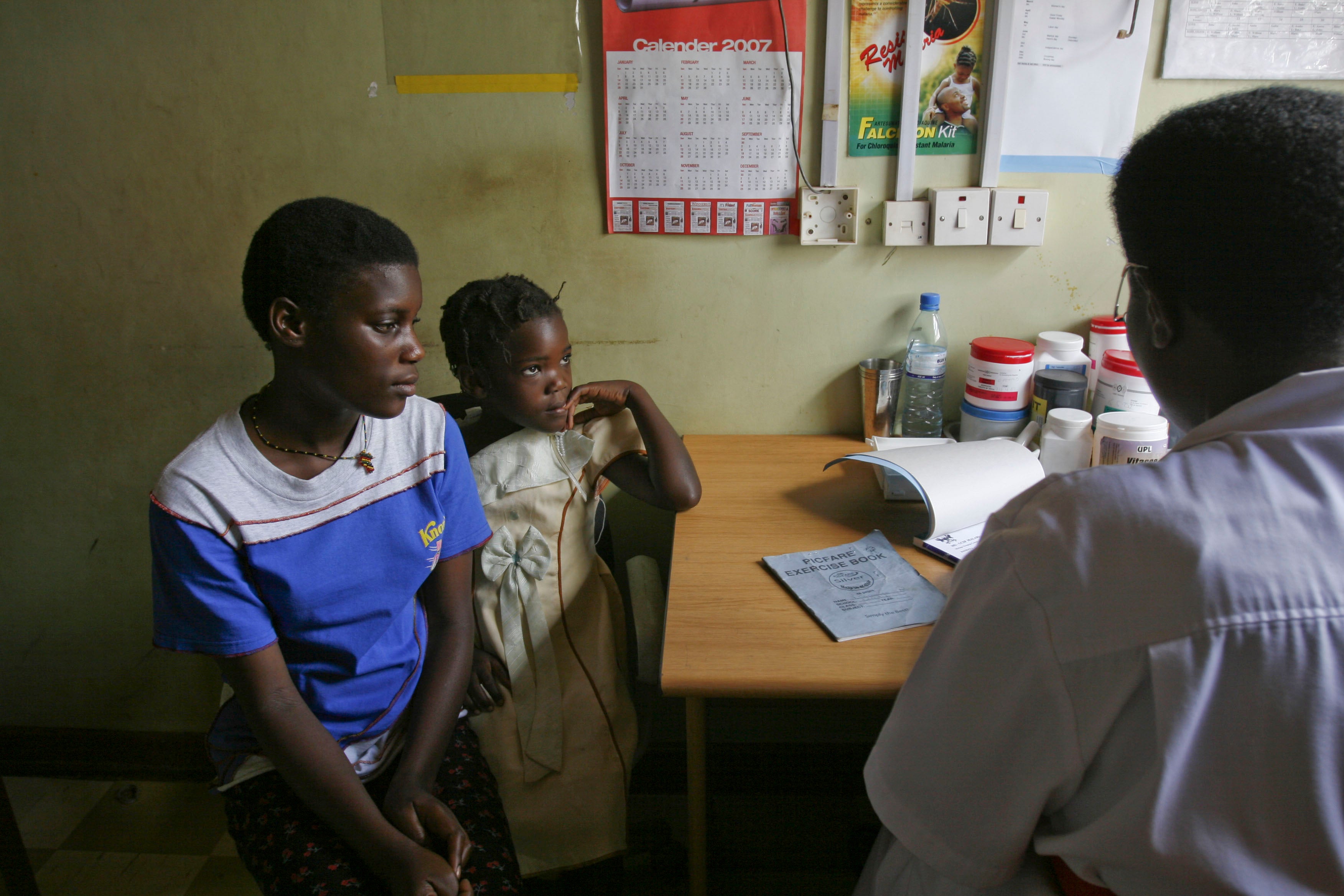
This progress paralleled a surge in financial support from two donor-funded programs in the mid-2000s—the Global Fund to Fight AIDS, Tuberculosis and Malaria, and the US President’s Malaria Initiative—in addition to other national policymaking and programming. More than US$2 billion in investments were budgeted for these initiatives in Uganda.,,
Figure 10. Association between interventions and malaria prevalence in Uganda, 2006–2021

Bed net distribution, especially among pregnant women, was a top priority of Uganda’s National Malaria Control Program. Insecticide-treated nets (ITNs) were issued universally at the community level and were offered to pregnant women at health facilities as an incentive for attending ANC sessions.
As a result of these and other programs, ITN coverage almost doubled during the study period: 47% of households had at least one net in 2009, compared with 90% in 2014.,
While the emphasis on distribution to pregnant women was a major factor in the uptake of ITNs and the consequent reduction in anemia prevalence, the proportion of non-pregnant women with bed nets also increased substantially, from 25% in 2006 to 64% in 2016.,
“Previously, [the government was] not giving anyone nets, then they started giving [them to] pregnant mothers on their fourth antenatal visits, and they now give them on their first antenatal visit. But now the government distributes treated nets even to the general public, and we educate mothers on how to use them before we give them the nets. Even VHTs [village health teams] educate the mothers on their beneficial use.” (Midwife, Buyende District)
Village health teams (VHTs) were a critical component in controlling malaria. They improved access to and utilization of malaria interventions via community-based platforms—including counseling on bed net usage—and provided early detection and referral services for a range of conditions, malaria being one of the most important.
The Uganda Ministry of Health also prioritized intermittent preventive treatment during pregnancy (IPTp) with sulfadoxine-pyrimethamine—a monthly prophylactic treatment for prevention of malaria among pregnant women. IPTp coverage played a meaningful part in reducing malaria incidence among WRA ages 15–49, thereby making its own contribution to the nation’s anemia program. Between 2009 and 2014, the proportion of WRA using IPTp increased from 45% to 59%.,
Alongside community- and antenatal-based interventions, the Ugandan government implemented indoor residual spraying (IRS), which involved spraying insecticides on indoor surfaces to kill mosquitoes, as a core malaria control strategy. IRS was initially introduced in 10 high-burden northern districts, where it substantially reduced malaria cases, particularly among children under five. A cross-sectional household survey in high-transmission northern Uganda found lower parasitemia rates in IRS districts compared to a nonsprayed district (37.0% and 16.7% versus 49.8%, p < .001) and lower anemia prevalence (38.8% and 36.8% versus 53.0%). In 2014, the IRS program was relocated to 14 eastern districts, where it has been sustained. However, malaria resurged in the original northern districts following IRS discontinuation, prompting its reintroduction in 2017.
Uganda also enhanced its malaria surveillance system through the Health Management Information System as part of the National Malaria Control Program. Staff from the Uganda Ministry of Health Resource Centre, responsible for collecting and transmitting health data, received Health Management Information System training, which strengthened the country’s capacity for data collection, management, and analysis. This improvement enabled timely and accurate reporting of malaria cases, diagnostic testing, inpatient cases, and deaths. As a result, Uganda achieved real-time tracking of malaria trends across health facilities, facilitating faster outbreak responses and data-driven decision-making to optimize malaria control efforts.
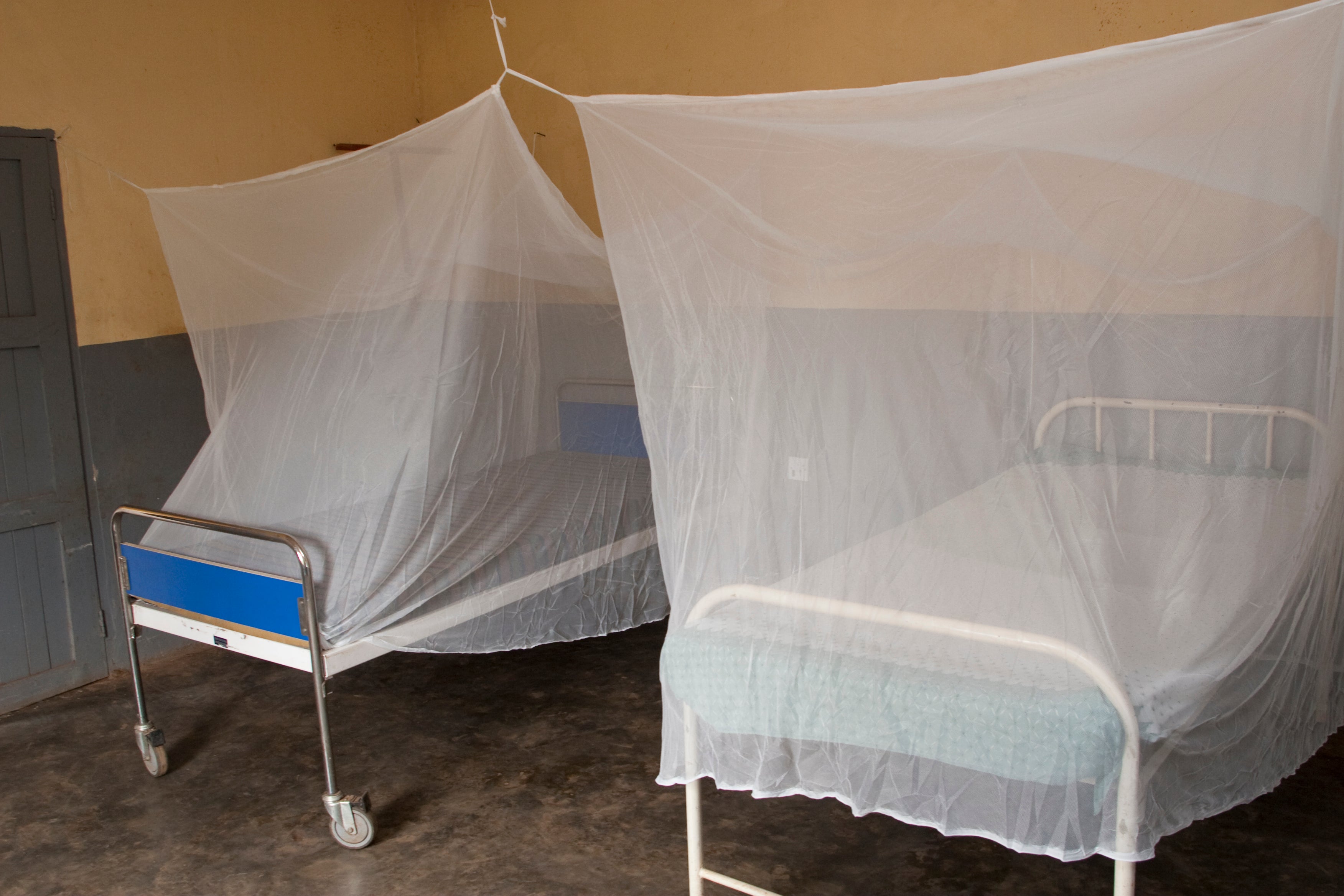
Family planning
Family planning interventions play a vital role in empowering women, often leading to lengthened intervals between pregnancies and reduced incidence of unintended and high-risk pregnancies, which can have severe health implications for women. High-risk pregnancies, particularly those of high parity (i.e., pregnancy in women who have had multiple pregnancies over their life), elevate the demand for the iron and folate that are needed to produce red blood cells, increasing the risk of anemia. Iron deficiency related to anemia is seen in women with a higher number of pregnancies, as diets usually do not compensate for the increased demand for iron during gestation. Multiple pregnancies also put women at higher risk of hemorrhage, which can lead to anemia.
One key outcome indicator that illustrates the success of family planning interventions is modern contraceptive use. Contraception empowers women to choose the timing of their pregnancies, contributing toward longer intervals between pregnancies and older ages at first pregnancy, both of which are associated with healthier pregnancies and deliveries.
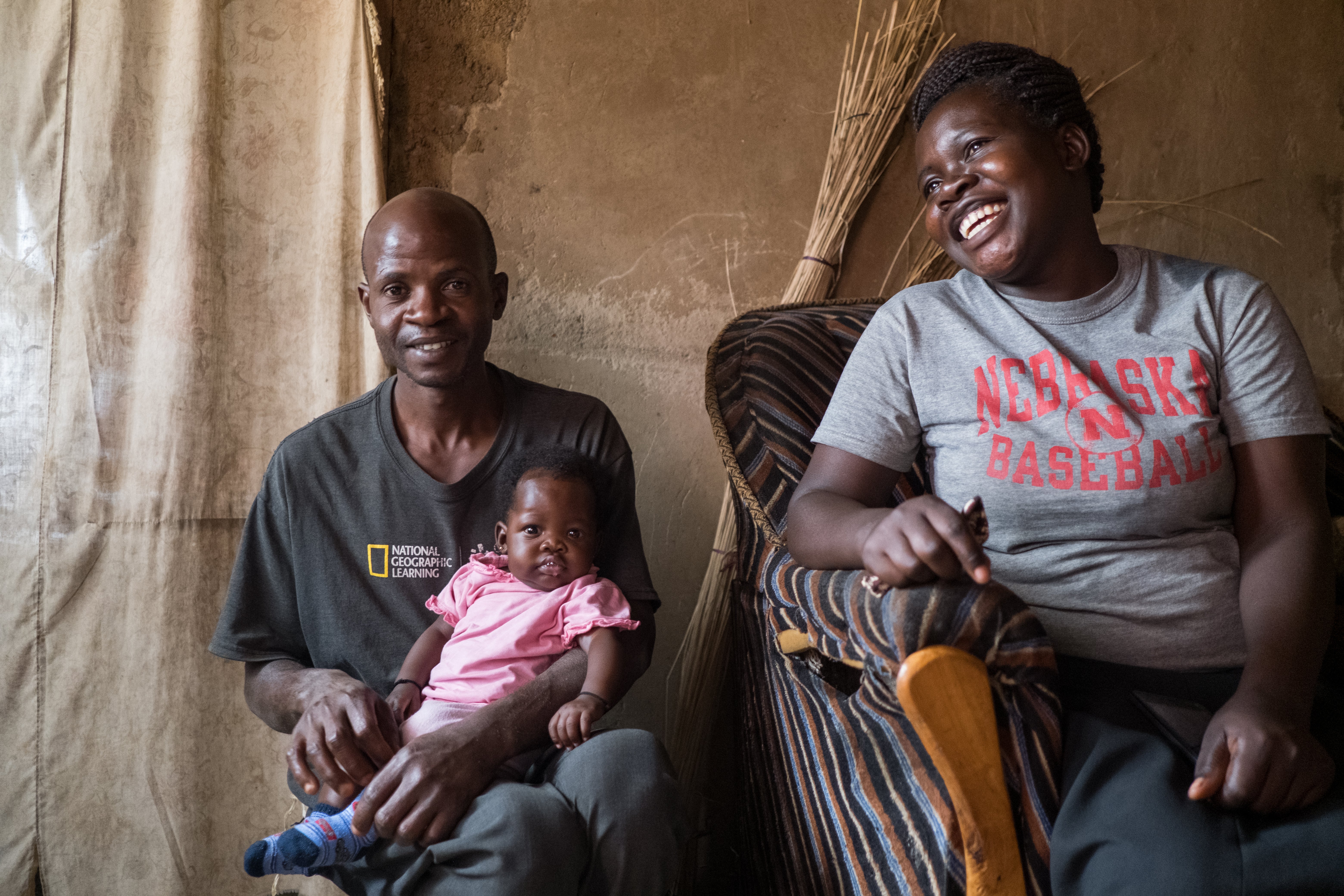
In Uganda, substantial increases were observed in modern contraceptive use and associated family planning indicators; during the study period, use of modern contraceptive methods among all WRA increased from 15% in 2006 to 27% in 2016., By 2016, injectables were the most commonly used method (13.9%), followed by implants (5%) and condoms (3%). Injectables and implants saw the largest increases since 2006, rising from 7.7% to 13.9% and from 0.3% to 4.7%, respectively., Other modern methods included intrauterine devices, female and male sterilization, emergency contraception, the standard days method, the lactational amenorrhea method, and others. The 2022 Uganda Demographic and Health Survey shows continued progress in the use of modern contraceptive methods, with a particular increase in the adoption of injectables and implants. These methods remain among the most popular choices for family planning, reflecting a broader trend of growing use of modern contraception among WRA.
Figure 11. Change in the use of modern contraceptives among WRA in Uganda, 2006–2016

Uganda Bureau of Statistics (UBOS), Macro International Inc. Uganda Demographic and Health Survey 2006. Calverton, MD: UBOS/Macro International Inc.; 2007. Accessed June 26, 2023. https://dhsprogram.com/publications/publication-fr194-dhs-final-reports.cfm
Uganda Bureau of Statistics (UBOS), ICF International. Uganda Demographic and Health Survey 2011. Kampala, Uganda/Calverton, MD: UBOS/ICF International; 2012. Accessed March 20, 2025. https://dhsprogram.com/publications/publication-fr264-dhs-final-reports.cfm
Uganda Bureau of Statistics (UBOS), ICF. Uganda Demographic and Health Survey 2016. Kampala, Uganda/Rockville, MD: UBOS/ICF; 2018. Accessed June 26, 2023. https://dhsprogram.com/publications/publication-fr333-dhs-final-reports.cfm
“In a way, family planning is impacting anemia because our women were getting pregnant every year, but now they are able to have some breathing space because of family planning.” (Health official, Pallisa District)
Success in improving contraceptive use was a direct result of several years of policies and programs, advanced by the government and the NGO community. Uganda demonstrated commitment to improving family planning with the implementation of the Reproductive Health Commodity Security program of 2009, which focused on improving access to and coverage of commodities (including contraceptives) and family planning counseling at the facility and community levels. The country also launched the Reproductive Health Voucher Program, which further improved women’s access to care by providing transportation to health facilities for care, delivery, and other women’s health interventions.
Additionally, PATH led the Sayana Press program, which trained VHTs to administer injectable contraceptives in remote communities. Through this program, 2,100 VHTs were trained across 336 health facilities and 28 rural and peri-urban districts and administered 130,000 total doses between 2014 and 2016.
Improved contraceptive use was primarily realized through contraceptive injections and implants, which not only offer continuous coverage over extended periods of time (leading to a higher chance of parity reduction and increased birth spacing) but also might reduce bleeding related to menstruation.
Cultural views on contraception and fertility preferences have also evolved in Uganda over recent years.
“There is more use of contraceptives now compared to 20 years ago. Because when you look at the mothers then, having many children was a [source of] pride, but today it’s no longer fashionable.” (Hospital official)
However, many pockets of Ugandan culture still regard family planning with disapproval or ambivalence, and acceptance varies by region. Women interviewed in the Buyende District (in the Eastern Region) highlighted potential barriers to acceptance, such as mistrust of contraceptive efficacy, lack of knowledge about family planning services and their own reproductive health, and polygamous family lifestyles.
“It’s unfortunate that family planning hasn’t taken off well among all women. We have improved and done a great job, but still a lot of work is to be done in terms of acceptance [in response to the perceived] need to have babies, the need to protect their marriage. So, it needs to be looked at holistically while addressing maternal anemia. But still, family planning does a lot in addressing maternal anemia.” (Academic key interviewee)
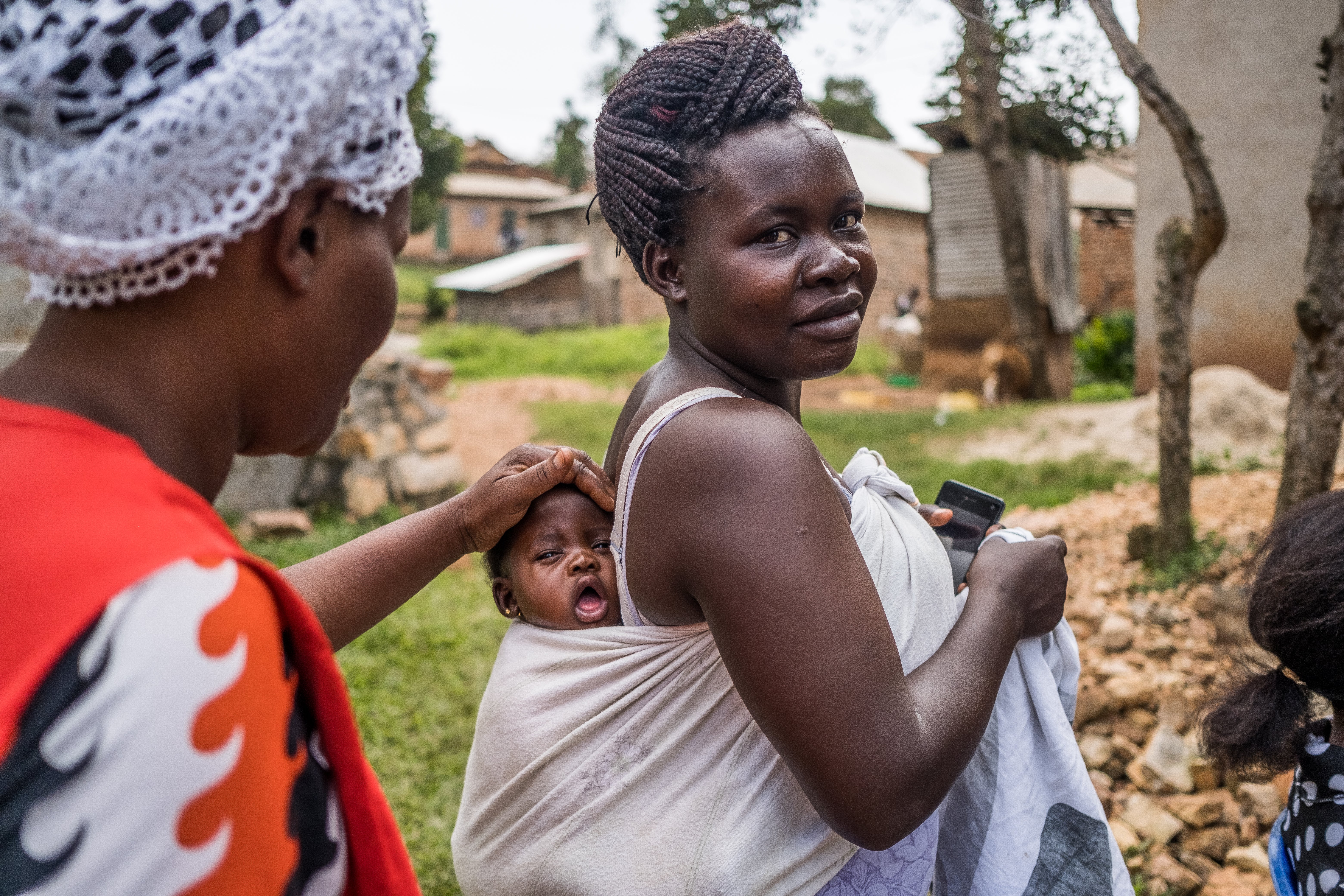
Sociodemographic development
Findings from our analysis show that sociodemographic improvements for the Uganda population also played an important role in reducing anemia among WRA. Overall, the population is less impoverished and more urbanized than at the start of this century, with substantially better access to clean water and sanitation. These changes, along with other related shifts in the nation’s social and economic landscape, have contributed to the decline in anemia.

Poverty alleviation
Uganda’s Poverty Eradication Action Plan, introduced in 1997, served as the country’s overarching development framework, guiding government policy through four core pillars: (1) fostering economic growth and transformation, (2) ensuring good governance and security, (3) enhancing opportunities for the poor to increase their incomes, and (4) improving overall quality of life. During its implementation, Uganda experienced a notable decline in poverty levels, from 56% in 1992 to 38% in 2003.
A key focus of the Poverty Eradication Action Plan was reducing poverty among WRA through community-based programs like women’s savings groups. By increasing access to financial services, savings, and credit, these initiatives empowered women to invest in better nutrition and health care. Improved financial stability enabled women to afford iron- and vitamin-rich foods, directly addressing nutritional deficiencies that contribute to anemia. Additionally, better access to health care ensured they received essential screenings and supplements to manage and reduce anemia.
The proportion of the population at or below national poverty lines (as measured by an individual’s ability to meet basic caloric requirements, adjusted for age, gender, and daily activity level) decreased by 31% between 2006 and 2016. In addition, the proportion of the population living in extreme poverty, defined as less than US$2.15 per day (2017 purchasing power parity), decreased by 28%.
Urbanization
Uganda’s urban population growth, driven by rural–urban migration, population increase, and changes in municipal boundaries, is associated with improved access to health care, diverse foods, and economic and educational opportunities. Better health care enables earlier detection and timely treatment of anemia, while access to diverse foods provides the essential vitamins and iron needed for red blood cell production and anemia reduction. Additionally, economic opportunities empower women to afford better nutrition and health care, and higher education levels raise awareness of anemia prevention and nutrition, further contributing to anemia reduction.
One specific mechanism of improved socioeconomics for women in urban areas was urban trading centers; stakeholders reported that urban trading centers gave communities increased access to commodities and services. Through markets, urban communities had access to foods they could not grow in their gardens, thus improving dietary diversity in the local communities. Urban centers also provided a mechanism for income generation for women, via selling of excess goods and commodities.
“[Urbanization] boosts people’s incomes as well as bringing goods or commodities closer to the people. There are so many trading centers that are coming up in the district and now what these mothers do, instead of wasting something that she has in excess, she takes it to the center and sells off where she gets money that helps her to acquire what she doesn’t have… including access to health facilities for essential health and nutrition services. With urbanization, markets come closer to the communities, so people have access to many things that they may not be able to plant in their own gardens.” (Key interviewee, District Health Office, Buyende District)
“Over the past 20 years, women did not have money in their hands, it was only men but nowadays women can also do businesses in those trading centers; women can sell fish, bread and other things from those centers and that is why women today are economically empowered; they don’t depend on their husbands for everything needed in the household.” (Focus group participant, Pallisa District)
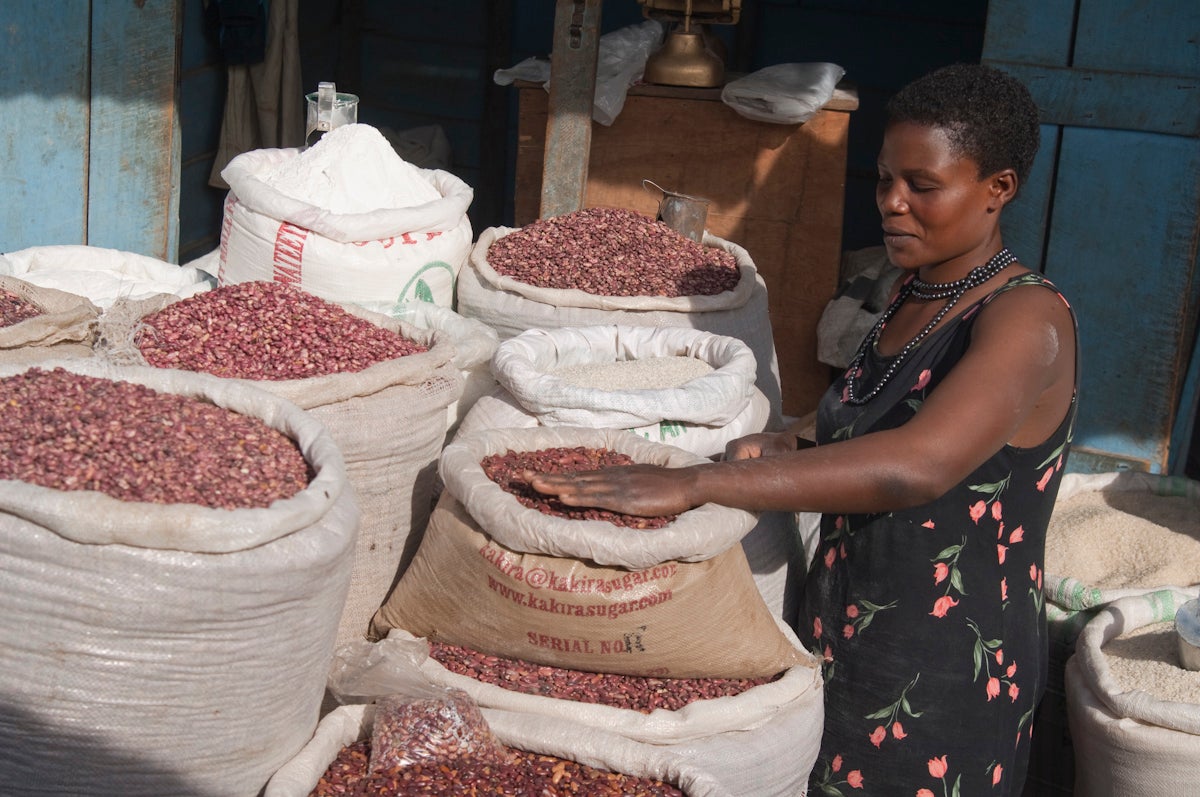
The proportion of people living in urban areas increased from 17% in 2006 to 23% in 2016, with the annual urban population growth rate increasing from 5.9% to 6.2% during the same period. Urbanization was especially extensive in the Central Region, which includes Kampala—home to 31% of the nation’s urban population. Some of the largest declines in anemia prevalence among WRA during the study period were in the Central Region, from 38% in 2006 to 29% in 2016. This growth in the urban population—a result of the creation of new districts, development, the proliferation of small cities, natural growth, and rural–urban migration—likely improved access to a broad range of health services.
Water, sanitation, and hygiene
Based on our analysis, another socioeconomic development with a substantial impact on anemia prevalence was widespread improvement in water, sanitation, and hygiene (WASH). Improvements in this area are important as they can reduce infection-driven anemia, lower chronic inflammation, and enhance the overall household health environment., Chronic infections like malaria or parasitic diseases can cause blood loss and inflammation, disrupting red blood cell regeneration and nutrient absorption. Poor sanitation also increases gastrointestinal infections, impairing the absorption of nutrients like iron, folate, and vitamin B12. By reducing infections and inflammation, improved WASH supports better nutrient absorption and red blood cell production, ultimately lowering anemia rates.
Uganda established national multisectoral policies and programs to drive WASH-related improvements, most notably updates to the water and sanitation sector policy guidelines, which was implemented by the Ministry of Water and Environment in collaboration with the Ministry of Health to promote access to safe water and sanitation services. From 2008 to 2015, the Ministry of Health allocated US$384 million to WASH-related programs and policies, underscoring its strong commitment to improving WASH interventions.
VHTs again played a critical role in ensuring effective implementation of interventions. Team members engaged in direct community outreach and education to improve WASH outcomes.
“We have the VHTs who are moving home-to-home, emphasizing uses of clean water, appropriate hygiene of washing hands, and sanitation of having a latrine.” (Key interviewee, Buyende District)
The proportion of the population with access to improved drinking water increased from 67% in 2006 to 78% in 2016., In rural areas, it increased from 64% to 74% during the same period.,
“Over the years, the hygiene and sanitation practices have been seen increasing. Access to potable water has significantly increased in both rural and urban [areas], and when we talk about sanitation or WASH, it’s critical in disease prevention. … Over the years, we have seen key parameter improvements in hygiene, potable water both in rural and urban [areas], [and] sanitation. And [we’re] looking at issues like open defecation.” (NGO key interviewee)
The proportion of households with an improved sanitation facility that hygienically separates human waste from human contact, while still low, increased considerably throughout the study period. The percentage of homes with access to improved sanitation facilities more than doubled from 9% in 2006 to 19% in 2016., In rural areas, this proportion also doubled, from 8% in 2006 to 16% in 2016.
Another achievement in sanitation was the slight decline in the proportion of Ugandans practicing open defecation, which fell from 11% in 2006 to 7% in 2016. This improvement was largely due to expanded latrine access and the outreach efforts of VHTs through public education programs. Reduced open defecation improves sanitation, preventing infections like diarrhea and parasites that contribute to anemia.
“Previously, people would defecate anywhere, but now we teach them that if you do not have a latrine or your latrine does not have a cover, then your neighbor is not safe because flies could take germs onto their food. They are now improving, because latrines are there and they are doing well in hygiene. They even slash the bushes [to reduce potential open defecation sites].” (Council member, Pallisa District)
Women’s education
Another key factor in reducing anemia, as highlighted in our findings, was female empowerment, including the education of women and girls and increased women’s participation in household decision making.
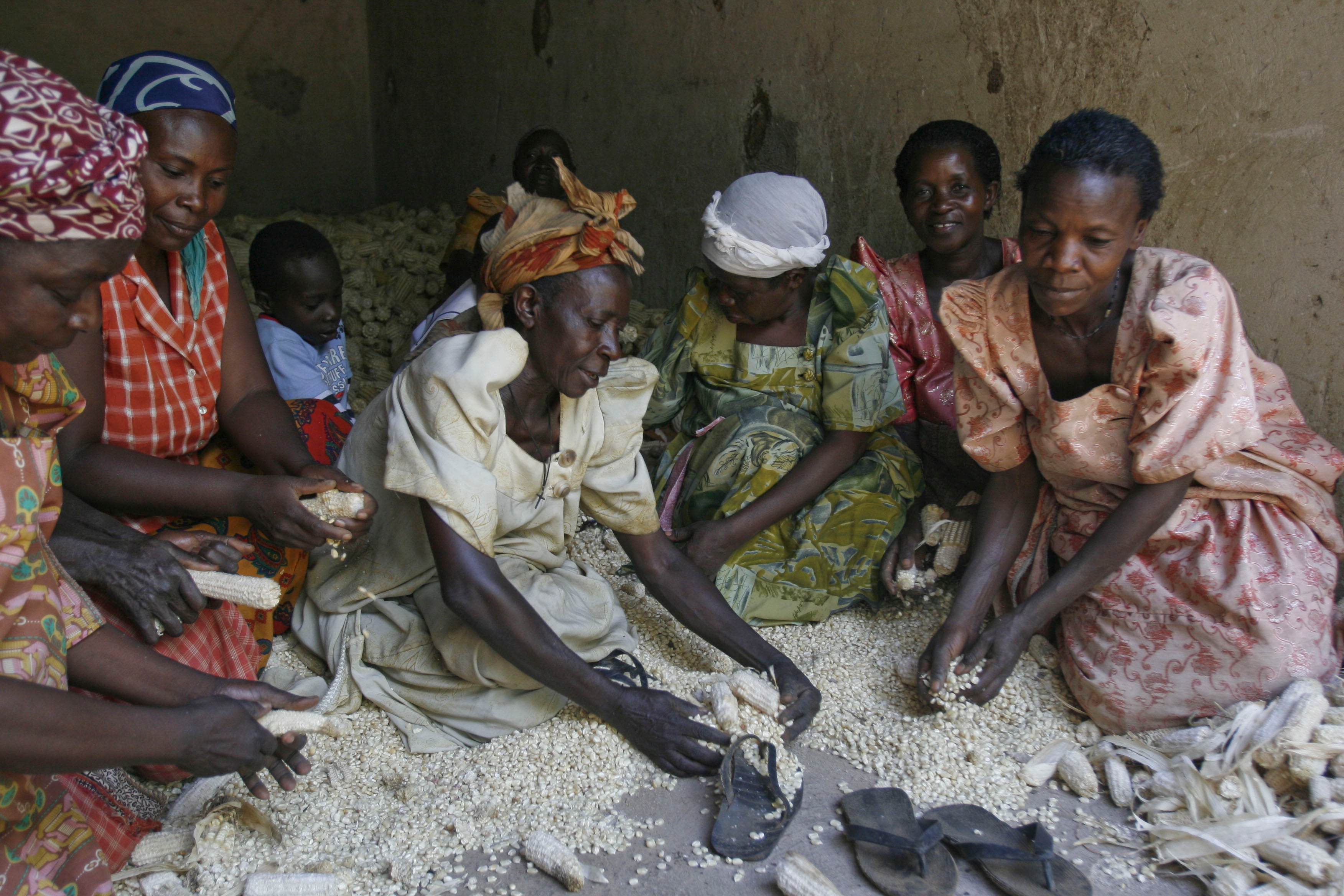
One key area of improvement is female access to education—both academic schooling and specific instruction on health topics such as nutrition via VHTs and at health facilities. Both kinds of education contribute to positive health outcomes, as women have the knowledge, skills, and personally earned income, enabling them to both improve their nutrition habits and afford better, more nutritious foods.
Uganda’s commitment to education is demonstrated through the Universal Primary Education Program and Universal Secondary Education Program. Both include a focus on the underlying causes of undernutrition through education on nutrition, diet, and overall health and aim to address underlying causes of historic barriers to education for girls and women—particularly high dropout rates due to early marriages and pregnancies.

Through these programs, Uganda provided free access to primary and secondary education for all children and encouraged families to keep their female children in school. This resulted in the mean years of education for women increasing from 5.0 years in 2006 to 6.5 years in 2016., Education on nutrition was directly integrated into the school curriculum to instruct students on nutritional practices. These lessons were also found to be shared with family members, amplifying their effect on everyday mealtime choices.
“To address issues related to nutrition, you have to tackle that at a young age, especially if you are talking about stunting, when the children are still young. If you are talking about maternal anemia, you need to look at the children from the time when they are still teenagers. And teach them what they are supposed to eat and how they will be when they grow.” (NGO key interviewee)
While literacy rates have increased across adult categories, gains have been even higher among women. In 2012, 62% of women were literate, an increase of 5% in 10 years—but among women ages 15 to 24, 82% were literate, an increase of 7%., This progress continued beyond the study period—in 2018, 70.8% of women ages 15 and older were literate, and 90% of women ages of 15 to 24 were literate.39
Improvements in educational attainment and nutrition-related education were linked to changes in anemia prevalence among women in Uganda during the study period. Educated individuals are more likely to understand the importance of a balanced diet, including iron-rich foods, and seek timely health care. This is reflected in the disparity in anemia prevalence between non-pregnant WRA with no education and those with secondary or higher education. For example, in 2016, anemia prevalence was 37.2% among non-pregnant women with no education, compared to 28.6% among those with secondary or higher education.
Figure 12: Anemia prevalence by maternal education level in Uganda from 2006-2016
Uganda Bureau of Statistics (UBOS), Macro International Inc. Uganda Demographic and Health Survey 2006. Calverton, MD: UBOS/Macro International Inc.; 2007. Accessed June 26, 2023. https://dhsprogram.com/publications/publication-fr194-dhs-final-reports.cfm
Uganda Bureau of Statistics (UBOS), ICF International. Uganda Demographic and Health Survey 2011. Kampala, Uganda/Calverton, MD: UBOS/ICF International; 2012. Accessed March 20, 2025. https://dhsprogram.com/publications/publication-fr264-dhs-final-reports.cfm
Uganda Bureau of Statistics (UBOS), ICF. Uganda Demographic and Health Survey 2016. Kampala, Uganda/Rockville, MD: UBOS/ICF; 2018. Accessed June 26, 2023. https://dhsprogram.com/publications/publication-fr333-dhs-final-reports.cfm
Health care utilization and antenatal care
The last of the six broad factors contributing to anemia reduction, as identified in our analysis, is increased utilization of the health system. This includes a rise in the proportion of pregnant women attending at least four ANC visits, along with improvements in iron and folic acid supplementation and deworming. Regular ANC visits allow for early anemia detection and management in pregnant women. Iron and folic acid supplements prevent iron deficiency, while deworming reduces the impact of parasitic infections that contribute to anemia by causing blood loss and impairing nutrient absorption. In Uganda, these interventions have been linked to lower anemia rates among pregnant women.
Figure 13. Coverage of antenatal care, iron and folic acid supplementation, and deworming among women of reproductive age in Uganda, 2006–2016

Uganda Bureau of Statistics (UBOS), Macro International Inc. Uganda Demographic and Health Survey 2006. Calverton, MD: UBOS/Macro International Inc.; 2007. Accessed June 26, 2023. https://dhsprogram.com/publications/publication-fr194-dhs-final-reports.cfm
Uganda Bureau of Statistics (UBOS), ICF International. Uganda Demographic and Health Survey 2011. Kampala, Uganda/Calverton, MD: UBOS/ICF International; 2012. Accessed March 20, 2025. https://dhsprogram.com/publications/publication-fr264-dhs-final-reports.cfm
Uganda Bureau of Statistics (UBOS), ICF. Uganda Demographic and Health Survey 2016. Kampala, Uganda/Rockville, MD: UBOS/ICF; 2018. Accessed June 26, 2023. https://dhsprogram.com/publications/publication-fr333-dhs-final-reports.cfm
“Mothers’ health services have changed a lot. When I was posted here, antenatal clinic attendance was low and most mothers would come in the second or third trimester, and very few—if any—in the first trimester. But through education, the visits have increased for the first trimesters.” (Key informant, Pallisa District)
One reason for the improved coverage of ANC is that such care has become more available and accessible across much of Uganda, with increased numbers of health care providers, facilities, and transportation options.
“Access to maternal health services has tremendously improved. Now, we have 16 sub-counties and apart from the two original sub-counties all the other 14 sub-counties have health center III [facilities].” (Government official, Pallisa District)
Reaching those facilities has also become easier due to improvements in transportation.
“Twenty years [ago], accessing ANC and delivery services was a bit hard. Nowadays, things have changed … it is easy to get to the hospital because there is an ambulance. Back then, the health center did not have the ambulance and if such an emergency occurred, you had to ride a bicycle to get [to] Pallisa Hospital.” (Focus group participant, Pallisa District)
One ANC intervention especially relevant to the anemia campaign is iron and folic acid (IFA) supplementation. The National Anemia Policy of 2002 established an IFA program, which provided supplements for pregnant women during ANC visits.
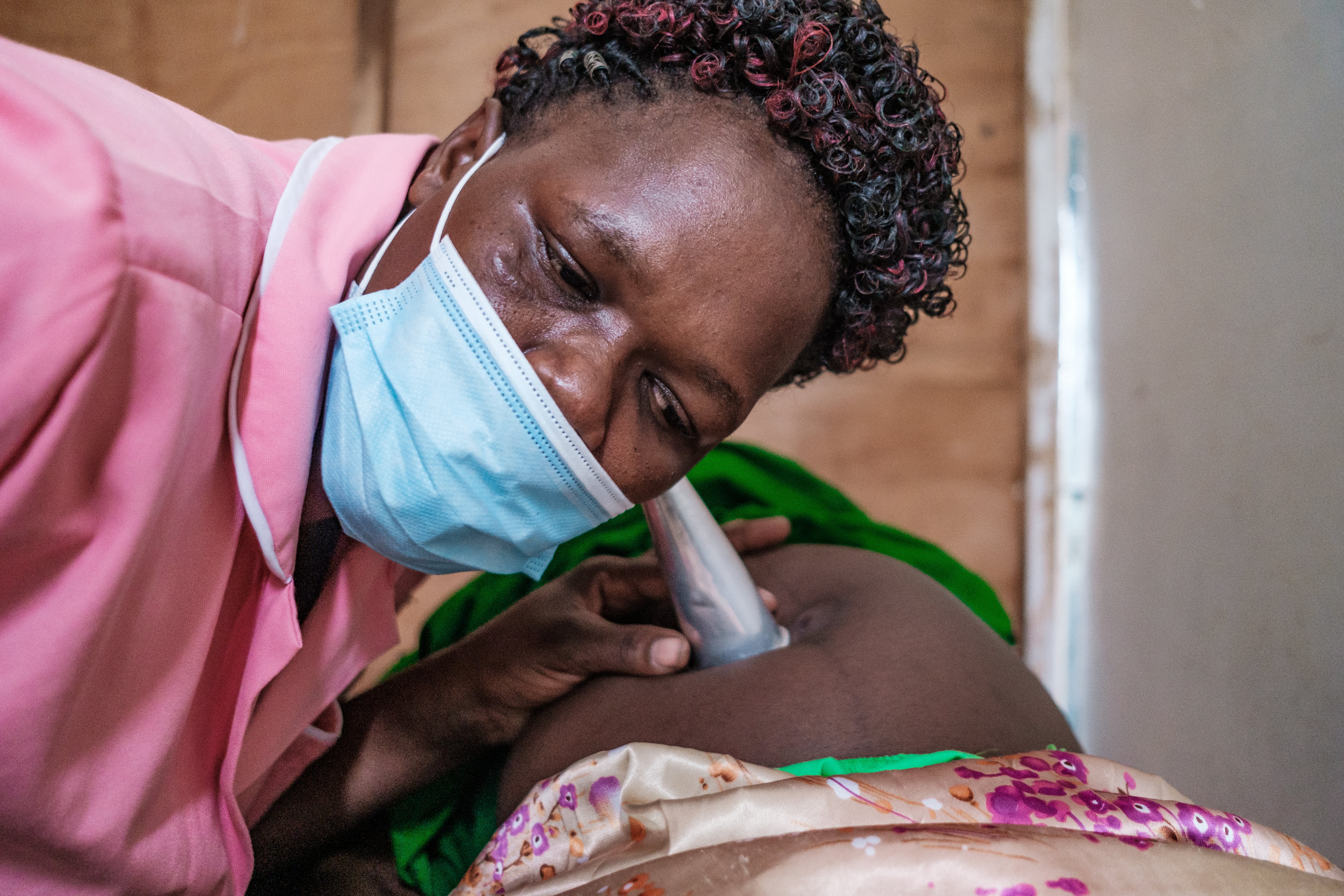
“We provide folic acid supplementation, which is given to women at every antenatal visit, so we increase the frequency of antenatal visits to increase uptake of folic acids.” (Government official)
As a result of these and related policies, IFA coverage increased substantially from 64% to 88% between 2006 and 2016. Women also adhered to the prescribed regimen at higher rates, taking IFA three times longer in 2016 than in 2006. Additionally, the percentage of WRA taking iron supplements for more than 90 days increased from 4% to 23% between 2011 and 2016. These improvements were key to addressing iron deficiency, a major cause of anemia, and reducing its prevalence.
Figure 14. Population coverage of iron and folic acid supplementation by days of adherence in Uganda, 2006–2016

Uganda Bureau of Statistics (UBOS), Macro International Inc. Uganda Demographic and Health Survey 2006. Calverton, MD: UBOS/Macro International Inc.; 2007. Accessed June 26, 2023. https://dhsprogram.com/publications/publication-fr194-dhs-final-reports.cfm
Uganda Bureau of Statistics (UBOS), ICF International. Uganda Demographic and Health Survey 2011. Kampala, Uganda/Calverton, MD: UBOS/ICF International; 2012. Accessed March 20, 2025. https://dhsprogram.com/publications/publication-fr264-dhs-final-reports.cfm
Uganda Bureau of Statistics (UBOS), ICF. Uganda Demographic and Health Survey 2016. Kampala, Uganda/Rockville, MD: UBOS/ICF; 2018. Accessed June 26, 2023. https://dhsprogram.com/publications/publication-fr333-dhs-final-reports.cfm
As with other leading interventions, VHTs played a prominent role in the IFA program. VHTs provided supplements directly to pregnant women in the communities where they lived and participated in community outreach to advance anemia-reduction efforts.
“Previously, we were giving ferrous and folic acid to the pregnant women at the health facilities alone, but now the VHTs conduct monthly community outreaches to improve blood-hemoglobin levels of the pregnant women.” (Hospital staffer, Pallisa District)
As it relates to ANC coverage and supplementation, multiple micronutrient supplements are a future focus area for Uganda to further address micronutrient deficiencies .
